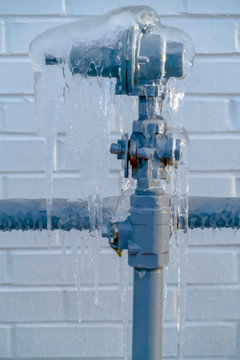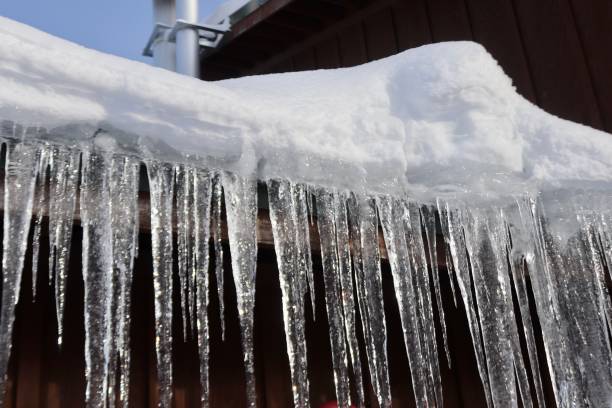Tips to Avoid Frozen Pipes in Cold Weather: Expert Advice
Tips to Avoid Frozen Pipes in Cold Weather: Expert Advice
Blog Article
Do you find yourself trying to find advise concerning How to prepare your home plumbing for winter weather?

Cold weather can wreak havoc on your pipes, especially by freezing pipes. Right here's exactly how to avoid it from occurring and what to do if it does.
Intro
As temperatures decline, the danger of frozen pipelines boosts, possibly leading to expensive repairs and water damage. Comprehending exactly how to avoid frozen pipes is essential for property owners in cool environments.
Comprehending Icy Pipes
What causes pipes to ice up?
Pipelines freeze when subjected to temperatures listed below 32 ° F (0 ° C) for extended durations. As water inside the pipes ices up, it expands, taxing the pipeline wall surfaces and possibly triggering them to break.
Threats and problems
Icy pipelines can bring about water interruptions, residential property damage, and expensive repair work. Burst pipes can flood homes and cause considerable architectural damage.
Indications of Frozen Water Lines
Determining frozen pipelines early can avoid them from bursting.
Just how to recognize frozen pipelines
Seek reduced water circulation from faucets, unusual odors or noises from pipelines, and visible frost on subjected pipelines.
Prevention Tips
Insulating at risk pipelines
Cover pipes in insulation sleeves or make use of warmth tape to protect them from freezing temperatures. Focus on pipelines in unheated or exterior areas of the home.
Home heating methods
Maintain interior spaces adequately heated up, especially locations with plumbing. Open cabinet doors to allow warm air to flow around pipes under sinks.
Safeguarding Exterior Plumbing
Garden hose pipes and outdoor taps
Detach and drain garden pipes before winter season. Install frost-proof faucets or cover exterior taps with protected caps.
What to Do If Your Pipelines Freeze
Immediate activities to take
If you believe icy pipelines, keep faucets open up to alleviate pressure as the ice thaws. Utilize a hairdryer or towels taken in hot water to thaw pipes slowly.
Long-Term Solutions
Architectural changes
Think about rerouting pipelines away from outside wall surfaces or unheated areas. Add added insulation to attic rooms, cellars, and crawl spaces.
Upgrading insulation
Buy high-grade insulation for pipes, attic rooms, and walls. Appropriate insulation assists keep regular temperatures and reduces the danger of frozen pipelines.
Conclusion
Preventing icy pipes requires positive procedures and fast feedbacks. By understanding the causes, signs, and safety nets, property owners can protect their plumbing throughout cold weather.
5 Ways to Prevent Frozen Pipes
Drain Outdoor Faucets and Disconnect Hoses
First, close the shut-off valve that controls the flow of water in the pipe to your outdoor faucet. Then, head outside to disconnect and drain your hose and open the outdoor faucet to allow the water to completely drain out of the line. Turn off the faucet when done. Finally, head back to the shut-off valve and drain the remaining water inside the pipe into a bucket or container. Additionally, if you have a home irrigation system, you should consider hiring an expert to clear the system of water each year.
Insulate Pipes
One of the best and most cost-effective methods for preventing frozen water pipes is to wrap your pipes with insulation. This is especially important for areas in your home that aren’t exposed to heat, such as an attic. We suggest using foam sleeves, which can typically be found at your local hardware store.
Keep Heat Running at 65
Your pipes are located inside your walls, and the temperature there is much colder than the rest of the house. To prevent your pipes from freezing, The Insurance Information Institute suggests that you keep your home heated to at least 65 degrees, even when traveling. You may want to invest in smart devices that can keep an eye on the temperature in your home while you’re away.
Leave Water Dripping
Moving water — even a small trickle — can prevent ice from forming inside your pipes. When freezing temps are imminent, start a drip of water from all faucets that serve exposed pipes. Leaving a few faucets running will also help relieve pressure inside the pipes and help prevent a rupture if the water inside freezes.
Open Cupboard Doors
Warm your kitchen and bathroom pipes by opening cupboards and vanities. You should also leave your interior doors ajar to help warm air circulate evenly throughout your home.

As a person who reads about 6 Ways to Prevent Frozen Pipes, I assumed sharing that excerpt was really useful. Do you know another person who is looking into Winter Plumbing Precautions: Preventing Frozen Pipes? Please feel free to promote it. I recognize the value of reading our article about 6 Ways to Prevent Frozen Pipes.
Call Today Report this page